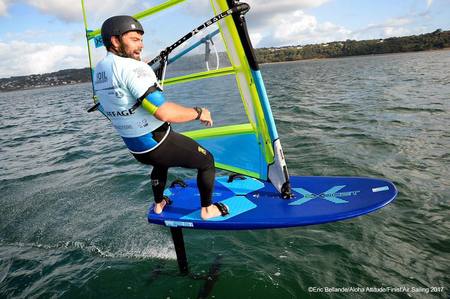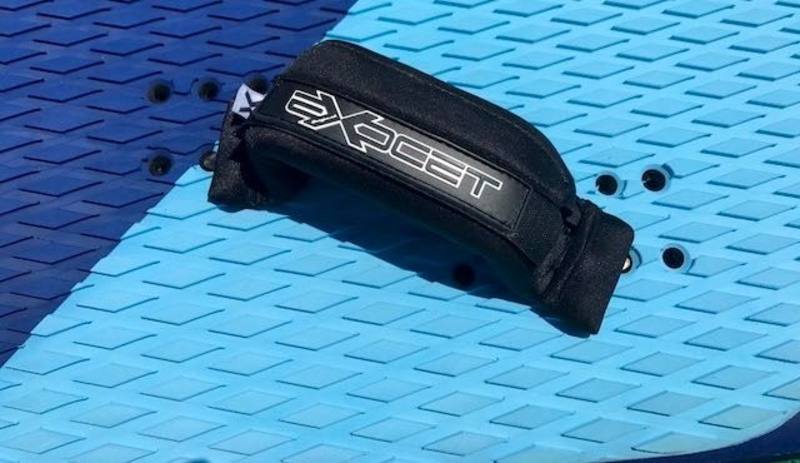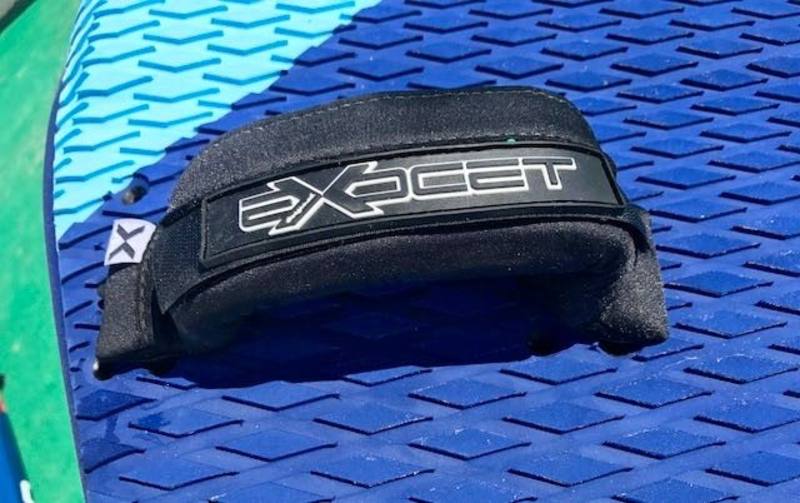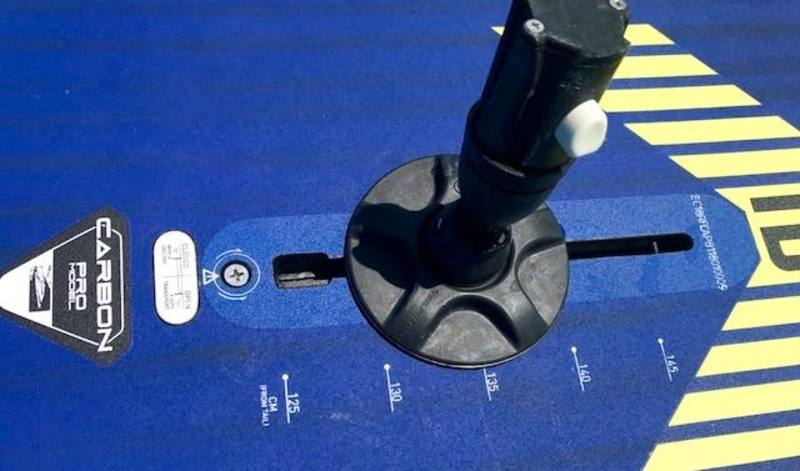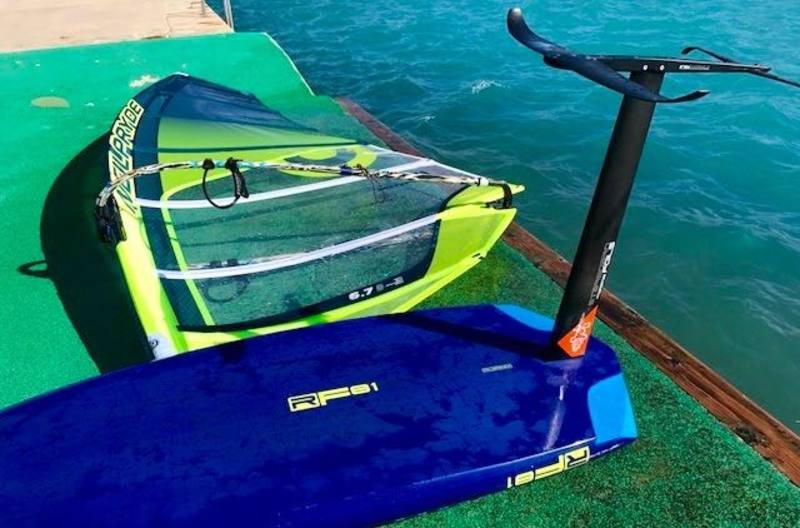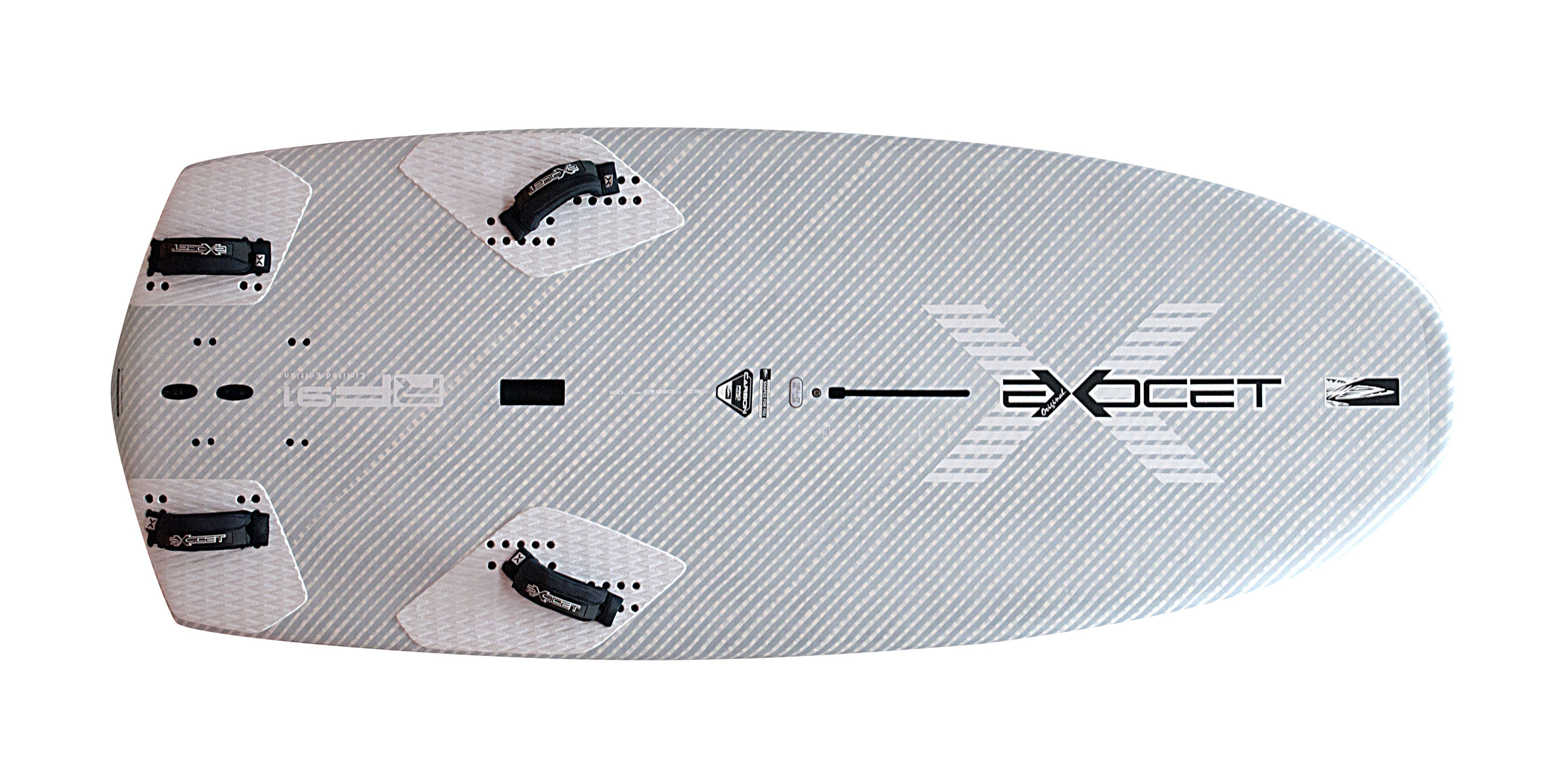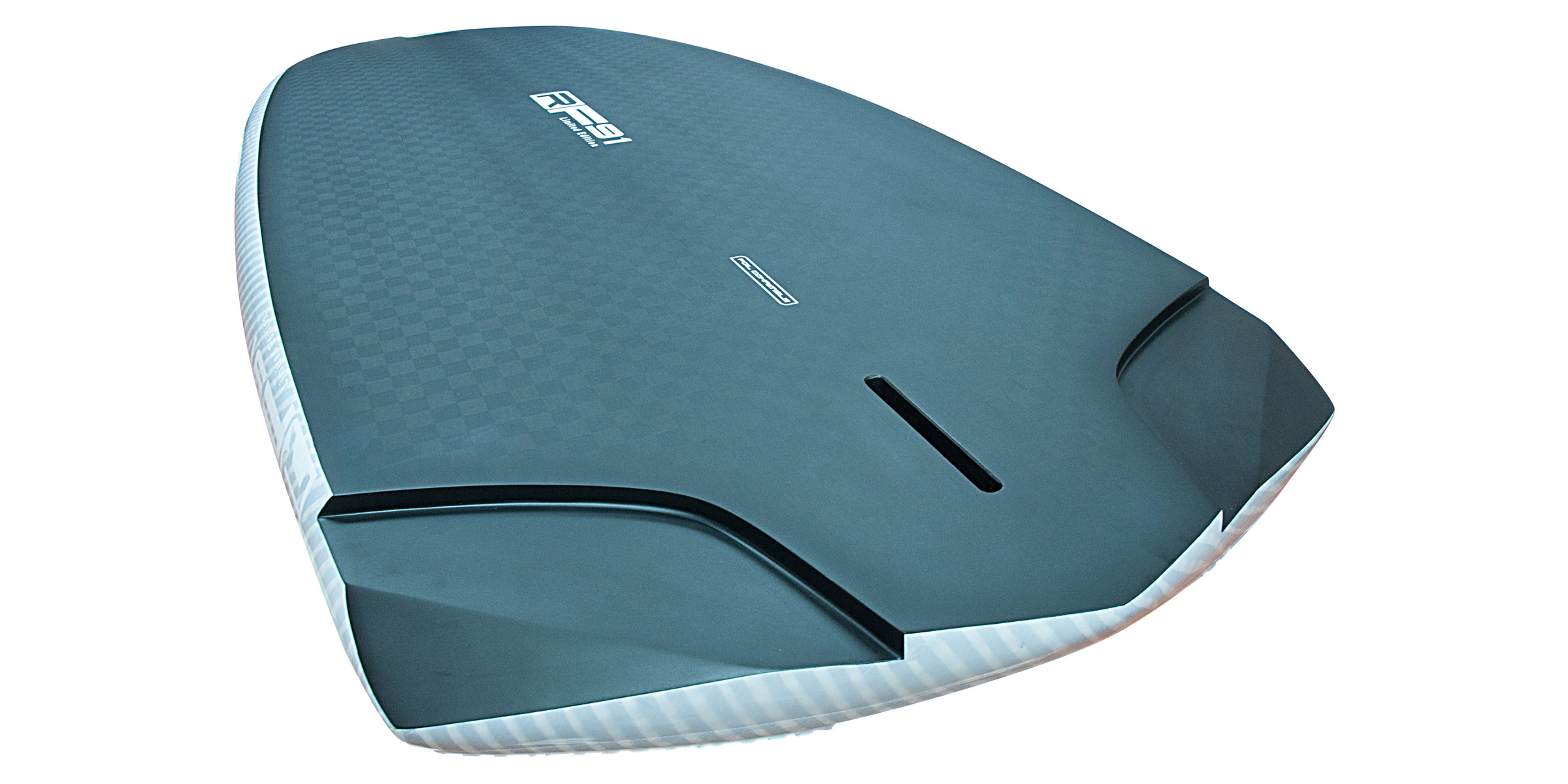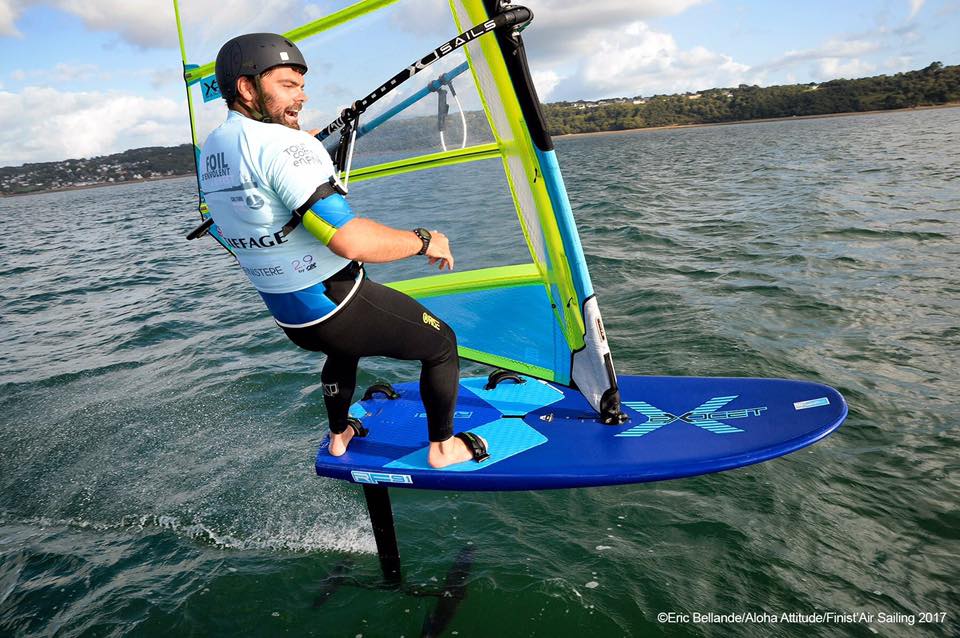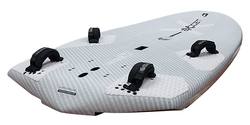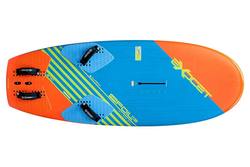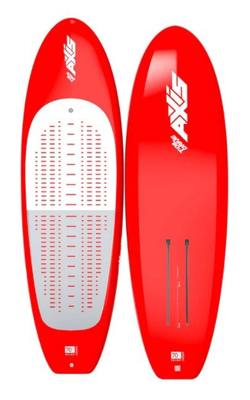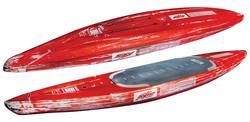Please choose an option:
RF 81 Texalium Limited Edition
• Custom Texalium Limited Edition finish
• Construction / Bi-axial carbon 160gr on PVC 80 kg / m3 deck and hull, multiple structural reinforcements on the rails
FACTS
- The RF 91 and 81 have specific deck and bottom shape to make foiling easier, Round tucked rail running deep to the bottom shape, the nose shape is built into a slight "round VE" to help the landing and touch down without loosing speed
The flat deck shape is design to have the feet in full contact while the board is railing, volume distribution is design to help foiling with feet in the footstraps
PROGRAM // RACING FOIL & CRUISING
- Dedicated for foiling in racing or recreational condition,
The RF 81 will be displayed in 2 construction carbon and AST
CONSTRUCTION
- CNC custom for the RF 91
- Molded semi-custom for the RF 81
- Custom finish
- Molded AST one shot for RF 81
- CARBON Version: Carbon Biaxial 160gr construction on 80 kg/m3
- PVC deck and bottom, multiple structural reinforcement on the rail
- Fiberglass & matt fiber construction recovered with ASA skin on deck and bottom
CONSTRUCTION
- CNC custom for the RF 91
- Molded semi-custom for the RF 81
- Custom finish
- Molded AST one shot for RF 81
- CARBON Version: Carbon Biaxial 160gr construction on 80 kg/m3
- PVC deck and bottom, multiple structural reinforcement on the rail
- Fiberglass & matt fiber construction recovered with ASA skin on deck and bottom

CARBON SANDWICH LIGHT
- Unfinished sanded
- Glass # 60gr
- Wood & glass # 160gr patch
- Carbon Bi-axial # 160gr
- PVC 80 kg/m3
- Glass # 60gr

AST
- ASA sheet
- Glass # 60gr
- Wood 0.6mm & Matt # 360gr patch
- Mat # 360gr
- Mat # 360gr
Windfoil - Board Test Exocet RF 81 - Outstanding control in all condition
After testing the prototypes of the RF in Brest last summer, we were awaiting the final version. It is now available, so let's go!
During this test, I chose to use mainly two foils
The GTS Starboard
The RS FLIGHT AL
Besides the fact that those are two very different foils at many different levels (price, construction, balance, technology), this allowed me to test the board first with a dedicated foil that corresponds to its goals (GTS), then with a combination for people who are on a budget (RF81 AST + NP ALU = roughly €2000)
This test was done the same day as the test for the starboard 122, in the same conditions. It was very interesting because these two boards are very different but I have to admit I enjoyed both even if the sensations were very different.
Picture 1
SPECIFICATION
| MODEL | RF 81 | RF 91 |
|---|---|---|
| VOLUME | 135 litres | 160 litres |
| LENGTH | 230 cm | 230 cm |
| WIDTH | 81 cm | 91 cm |
| CARBON WEIGHT | 8.8 kg (+/-6%) | 9.9 kg (+/-6%) |
| AST WEIGHT | 9.6 kg (+/-6%) | 10.8 kg (+/-6%) |
| SAIL | 4.0 – 9.0 m2 |
Windfoil - Board Test Exocet RF 81 - Outstanding control in all condition
After testing the prototypes of the RF in Brest last summer, we were awaiting the final version. It is now available, so let's go!
During this test, I chose to use mainly two foils
The GTS Starboard
The RS FLIGHT AL
Besides the fact that those are two very different foils at many different levels (price, construction, balance, technology), this allowed me to test the board first with a dedicated foil that corresponds to its goals (GTS), then with a combination for people who are on a budget (RF81 AST + NP ALU = roughly €2000)
This test was done the same day as the test for the starboard 122, in the same conditions. It was very interesting because these two boards are very different but I have to admit I enjoyed both even if the sensations were very different.
Test conditions
Spot - La Ciotat
Board : Exocet RF 81
Foil Starboard GTS and NP RS Flight AL
Rig : V8 6.7 + TPX 100
Trim
Mast position: 135 cm from tail
Take off
The RF81 has a very wide tail. You need a little more power to increase its speed. So you either need a little more wind or a bigger sail compared to a board like the Foil 122 ou the Tiny. In my opinion, it ranks behind the JP Hydrofoil but in front of the Elix RF1.
In most cases (except high wind) you will have to pump the sail to get the RF81 going. I have to admit that the gliding sensation has gotten much better compared to the early prototype. The shape has probably been slimmed down.
One word on the weight, which has been discussed greatly: many are focused on this characteristic...which in my opinion is a mistake. The problem is not the weight of the boards, it's their balance. You are better off with a 9kg board with a centre of gravity at 70cm from the tail rather than a 6kg board with a center of gravity at 140cm from the tail.
The RFs are far from being light , but you don't feel it while sailing because the center of gravity is closer to the tail. So no need to worry about the weight: you will be surprised by its behavior.
The flight
It doesn't take long for the behavior of the RF to become obvious. As soon you stabilize the flight you feel like you're on a railroad track. Contrary to the Foil 122 which was ultra sensitive, the RF feels locked in and nothing moves...at least from side to side. It is very similar to what I experienced foiling on a formula board without the awkwardness of a 1m wide board and the need to use a 9 square meter sail to get on a plane.
This feeling of being locked in seems to come from the top of the board being flat as well as the super wide outline in the tail and a widest point near the front straps. Compared to the early prototype, the tail area around the back strap is much more comfortable. The straps placement is still perfect.
Just like we were able to experience in Brest, we can confirm that the RF, when set up the way we did, has exceptional control. In the gusts, you feel safer than on any other board: it is much easier to control the overpowering effect of the foil. However, you may lose a little feel for maximizing the flight in very irregular wind...like we could do so well with the Elix F1X.
Touch downs
As usual, it is something we check on all the boards because it is crucial in windfoiling. Hitting the breaks when touching down always comes with the risk of flying over the handlebars and is quite annoying.
The RF takes it one notch further compared to other boards. On some touch downs, and thanks to its superbe gliding , we only hear the sound of water hitting the board. It's the only sign that you did touch down. Everything is super soft with a minimum loss of speed.
The evolution is amazing compared to the early prototype, especially the 91, which seemed to stick to the water a little. From now on the combination of scoop and board shape has been optimized.
All windfoil board shapers should learn from the RF's ability as it has become a reference point for today's shapes.
Combo low cost...but not low performance P
I wanted to test the combination of the RF/RS FLIGHT ALU because of its low cost appeal. €2000 for a board and a foil of this caliber is unheard of.
The first run was disappointing as it was difficult to take off. I did not anticipate that the NP foil was very much tail centered. I then moved all the straps all the way back which made the whole rig more balanced. The combo remained slightly back foot heavy but it will help in the gusts as well as feeling secure. We could also ad the washer under the back wing of the foil to help the take off but at this point I didn't feel the need to do so.
The whole rig felt very stable from side to side, one main characteristic of the NP foil, and very controllable in the gusts. With a powerful board like the RF we appreciated the stiffness of the Alu foil...by the way I think it would be unrealistic to use this board with a foil that's a little soft, there are other boards for that (Foil 122 or Tiny).
Obviously this combo will allow to lean against the foil and look for a greater upwind angle.
In conclusion, this low cost combo will satisfy all those who want to discover foiling at a reasonable cost with the possibility to explore slalom. For those who are more interested in freeriding or maneuverability they should look at the Horus H10 or the Eco 121 combo.
conclusion
As you can see, the RF fits foils that are stiff and powerful. One should avoid using it with foils with "soft" masts (H10, Fanatic, slingshots, viny, manta, aeromod). The RF requires a little more sail power than the average boards (Tiny, Starboard 122, RS ONE, JP Hydrofoil). It's a board that you will use with cambered sails, even light ones (V8, Skyscape, S type, Switchblade) rather than camless sails.
Summary
After the tests on the RF81 and the Starboard 122, we now have two new foil dedicated boards we can ad to our list. I have to admit that these two new boards hit the spot. I'm incapable of choosing one, both are fun to ride.
The RF is a step forward in the foil specific boards, with incredible control and its unique response to touch downs. Thank you to Patrice and his team for thinking outside the box. It's a real success

